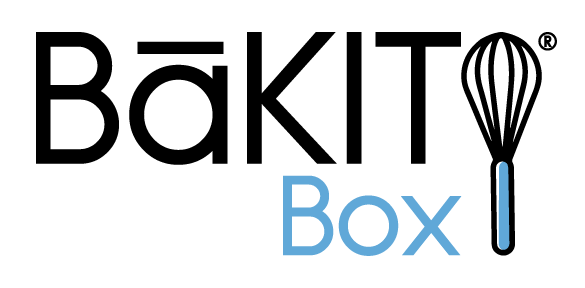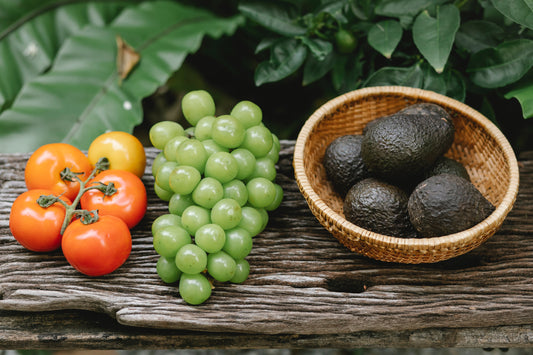Flour might be a pantry staple in many kitchens, but there are so many different varieties out there that it can be a little confusing to figure out the best ways to use each. Two kinds of flour that tend to get mixed up are all-purpose and self-rising flour: they look pretty similar, so how can you tell when it’s the right time to use all-purpose, and when you should reach for the self-rising instead? Here’s everything you need to know about all-purpose flour and self-rising flour, and the correct times to use each.
How is flour made?

Take a peek into any baker’s pantry and you’re almost guaranteed to find at least one kind of flour. It’s a key ingredient in many popular baked goods, contributing to the structure of your baked bread, cookies, cupcakes, bars, and so much more. Unless otherwise specified, many recipes tend to call for wheat flour. So in this section, we’ll be talking about wheat flour and how it’s made, although it’s important to note that you can also make flour from other grains, as well as corn, seeds, and nuts. One grain of wheat has three different parts: the protective outer bran casing, the inner endosperm, and the seed (germ). White flour is made primarily from the endosperm. To make the white flour that you are probably most familiar with, millers separate the endosperm from the bran and the germ, and the endosperm is then finely ground down and processed to create the final product. Sometimes, some of the bran and germ are added back in to boost nutrition and make whole wheat flour. Besides the actual processing of the flour, there are also different kinds of wheat varieties used to make flour, with each kind of wheat having a different protein content. Hard wheat varieties tend to have slightly more protein than soft wheat varieties. One of the proteins found in flour is gluten, which contributes to the structure of some of those baked goods. Generally speaking, harder flour with more gluten is used to make products like bread and pasta, while soft wheat with less gluten is used for more delicate, fluffy goods like cakes and pastries.
What is all-purpose flour?
All-purpose flour is made from the endosperms of both hard and soft wheat varieties. This optimizes the protein content to be suitable for a wide array of purposes (hence the “all-purpose” moniker).
What is self-rising flour?
Self-rising flour is a convenient baking product made from a mix of all-purpose flour, salt, and baking powder.
What is the difference between all-purpose and self-rising flours?
The difference between all-purpose and self-rising flours lies in how they each react during the baking process. As the name suggests, self-rising flours can “rise” on their own in the oven. On a more technical note, this means that it has a
leavening agent in the form of baking powder. When baking powder is combined with water and heated in the oven, it causes a chemical reaction that introduces carbon dioxide into the mixture. This causes your baked good to “rise” as the gas is released, making it nice and fluffy during the baking process. On the other hand, all-purpose flour does not contain any leavening agents at all, just the wheat endosperm. This means that it can’t rise on its own and results in a “flat” product if you aren’t adding another leavening ingredient. If you do want to make a product that rises, like a cake, cookie, or bread, you’ll need to add a separate leavening ingredient like baking powder, baking soda, or yeast. This ingredient will then activate during the cooking process and introduce gas bubbles to the mixture, which then causes the product to rise. Using all-purpose flour allows for more freedom than self-rising flour since you can add different leavening ingredients depending on what you’re trying to make. On the other hand, self-rising flour is a quicker and more convenient option for certain recipes.
When to use all-purpose flour
All-purpose flour really lives up to its name since its protein content allows for so many different uses! If a recipe calls for flour and doesn’t specify an exact kind, all-purpose is a safe bet. All-purpose flour can be used in a huge variety of foods including:
- Cookies, cakes, bread, biscuits … pretty much any baked good that requires flour!
- Thickening (like in stews and soups)
- Breading for frying
When to use self-rising flour
Self-rising flour is a product that was made for convenience since it allows you to skip the step of adding baking powder to your basic flour. It’s often included in pre-packaged baked good mixes, as well as in other simple baking recipes with minimal ingredients. Some good examples of self-rising flour uses include
- Quick muffins, pancakes, and biscuits
- Cakes and cupcakes
Can you use all-purpose flour instead of self-rising flour?
If your recipe calls for self-rising flour and you only have all-purpose, you can easily make your own self-rising flour mixture by adding your own salt and baking powder! If you don’t have your own baking powder, though, all-purpose flour is not a good substitute for self-rising flour.
How to make your own self-rising flour
Take 1 cup of all-purpose flour and add 1½ teaspoons of baking powder and ½ tsp of salt. Mix with a whisk or by sifting to combine. Make as much self-rising flour as your recipe calls for and store any extra in an airtight container in a cool, dark place.
Can you use self-rising flour instead of all-purpose flour?
You might be able to use self-rising flour instead of all-purpose flour, but this only applies if your recipe calls for baking powder as a leavening agent. It shouldn’t be used for recipes that call for baking soda, yeast, or any other leavening agents. In addition, even if you are using it for the correct recipe, it’s important to note that the exact ratio of your flour-to-leavening agent might be slightly skewed while using self-rising instead of all-purpose, which could potentially throw your final product off. When in doubt, it’s safest to stick to all-purpose flour if your recipe calls for it. Another thing to note is that if you do decide to use self-rising flour, you may need to reduce the amount of salt that you’re adding to your recipe slightly since the self-rise flour already has about ½ tsp per cup of flour (depending on the brand that you are using).
Key Takeaways
All-purpose flour is a base product that can be used for a wide variety of products, while self-rising flour includes an added leavening agent to simplify the baking process. Each has its own specific uses in the kitchen, but you can easily make your own self-rising flour if you have all-purpose flour and baking powder on hand.
Image credits: Featured image: Photo by
Klaus Nielsen from
Pexels image 1: Photo by
Mariana Kurnyk from
Pexels
 Take a peek into any baker’s pantry and you’re almost guaranteed to find at least one kind of flour. It’s a key ingredient in many popular baked goods, contributing to the structure of your baked bread, cookies, cupcakes, bars, and so much more. Unless otherwise specified, many recipes tend to call for wheat flour. So in this section, we’ll be talking about wheat flour and how it’s made, although it’s important to note that you can also make flour from other grains, as well as corn, seeds, and nuts. One grain of wheat has three different parts: the protective outer bran casing, the inner endosperm, and the seed (germ). White flour is made primarily from the endosperm. To make the white flour that you are probably most familiar with, millers separate the endosperm from the bran and the germ, and the endosperm is then finely ground down and processed to create the final product. Sometimes, some of the bran and germ are added back in to boost nutrition and make whole wheat flour. Besides the actual processing of the flour, there are also different kinds of wheat varieties used to make flour, with each kind of wheat having a different protein content. Hard wheat varieties tend to have slightly more protein than soft wheat varieties. One of the proteins found in flour is gluten, which contributes to the structure of some of those baked goods. Generally speaking, harder flour with more gluten is used to make products like bread and pasta, while soft wheat with less gluten is used for more delicate, fluffy goods like cakes and pastries.
Take a peek into any baker’s pantry and you’re almost guaranteed to find at least one kind of flour. It’s a key ingredient in many popular baked goods, contributing to the structure of your baked bread, cookies, cupcakes, bars, and so much more. Unless otherwise specified, many recipes tend to call for wheat flour. So in this section, we’ll be talking about wheat flour and how it’s made, although it’s important to note that you can also make flour from other grains, as well as corn, seeds, and nuts. One grain of wheat has three different parts: the protective outer bran casing, the inner endosperm, and the seed (germ). White flour is made primarily from the endosperm. To make the white flour that you are probably most familiar with, millers separate the endosperm from the bran and the germ, and the endosperm is then finely ground down and processed to create the final product. Sometimes, some of the bran and germ are added back in to boost nutrition and make whole wheat flour. Besides the actual processing of the flour, there are also different kinds of wheat varieties used to make flour, with each kind of wheat having a different protein content. Hard wheat varieties tend to have slightly more protein than soft wheat varieties. One of the proteins found in flour is gluten, which contributes to the structure of some of those baked goods. Generally speaking, harder flour with more gluten is used to make products like bread and pasta, while soft wheat with less gluten is used for more delicate, fluffy goods like cakes and pastries.






